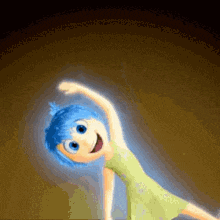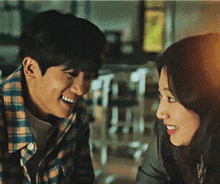Once upon a time, villains were just villains. They were ugly, evil, and had bad posture. But that’s not the case anymore.
Think about it: Loki is easily the most beloved character in the MCU. The Darkling had Shadow and Bone fans questioning their morals. Maleficent? We were terrified of her as children but couldn’t help sympathizing with her, despite her being… well, terrifying.

Image Credit: Darcy Delia on Pexels
And Coriolanus Snow? The Ballad of Songbirds and Snakes had us empathizing with President Snow. The same guy who turned children into entertainment for mass murder.
The question is: why do we love villains so much? Why do we search for books with morally gray love interests, sympathize with antiheroes, and prefer them over the heroes who literally save the world? Is it psychology?
Bad taste? Or are they just better characters? Let’s get into it.
Let us slide into your dms 🥰
Get notified of top trending articles like this one every week! (we won't spam you)Villains Have Depth, Heroes Have Morals
Villains tend to have more interesting backstories than heroes. They’re tragic, layered, and emotionally complex. Heroes?
They’re good. It’s something they were born with. But villains? They’re shaped by pain, twisted morals, betrayal, and usually some childhood trauma that we eat up.
The prime example? Loki. In Norse mythology, he was a trickster—chaotic, unpredictable, and driven by mischief, not tragedy.
He was evil for the sake of it. But the MCU changed that. Suddenly, he was a lost child—a Frost Giant abandoned at birth, raised as an Asgardian, never truly belonging. His schemes weren’t just for fun; they were a desperate attempt to prove himself. Did that excuse his betrayals and thirst for power? No. But it made us understand him. And sometimes, that’s all it takes to turn a villain into something more.

Image Credit: Gage Skidmore on Wikimedia Commons
Take Maleficent, for example. In her original Disney appearance, she was just evil for the sake of it—cursing a baby because she didn’t get invited to a party (major overreaction, but okay). But in Maleficent (2014), we got a deeper look: she wasn’t pure evil; she was hurt.
Betrayed by someone she loved, robbed of her wings, and driven by heartbreak. Suddenly, she wasn’t just a villain—she was a victim, too. Were we still unnerved by her treatment of faeries and her cold demeanor? Yes. But we got her.
And then there’s Coriolanus Snow. In The Hunger Games, he’s a cold, calculating dictator. But in The Ballad of Songbirds and Snakes, we see him before all that—a scared, ambitious, dirt-poor boy who just wants to survive.
And for a while, you root for him. You think, Maybe he’s not so bad. Then you watch him make choice after choice, inching toward villainy, until you’re witnessing the making of a monster.
Psychologically, we’re wired to empathize with pain. We understand betrayal, loss, and loneliness. When a villain’s actions stem from those emotions rather than just I want to take over the world, we relate to them—even if we don’t agree with them.

Take the Quiz: Which horror movie you should watch next?
Find your next spine chilling movie with this quiz :)
The “Forbidden” Factor
Villains are dangerous, and our brains love danger—at a safe distance. According to psychology, we’re naturally drawn to things that excite us. And villains?
They have that edge. The thrill of the unknown, the unpredictability, the fact that they could kill you—it’s all part of the appeal.

Image Credit: Cemrecan Yurtman on Pexels
This is why the “bad boy” trope is so strong in books and movies. It’s not about actually wanting to date someone who might betray you—it’s about the fantasy of someone who’s dangerous to everyone except you. (Yes, we all need therapy.)
Heroes Can Be Boring
Think about it: when was the last time a straight-laced, perfect hero stole the show? Exactly. Villains (especially the morally gray ones) get to do whatever they want.
They’re not tied down by righteousness or that whole “saving the world” agenda. They make their own rules, they’re unpredictable, and they have fun.
Voldemort? Okay, maybe he’s an exception—he’s definitely more "textbook evil" than tragic. But even his backstory is rooted in abandonment and pain.
He wasn’t born a villain; he was shaped into one. And while we’re not exactly out here romanticizing him (no nose, no thanks), his arc is still more compelling than, say, Harry just being good.

Image Credit: Artem Maltsev from Unsplash
Heroes, on the other hand, tend to follow the same old formula: save the day, do the right thing, struggle a little, but ultimately make the moral choice. Why? Because they feel morally obligated.
But is that even realistic? Be honest—how many of us would risk our lives for people we’ve never met?
Romanticization of the Antihero
It’s not just us. It’s how the media portrays villains. They’re no longer the creepy old men in capes; they’re young, attractive, and charismatic. Writers and directors know what they’re doing when they cast these roles.
Look at old TV shows and cartoons—villains had exaggerated features, scary smiles, and hunched postures. Now, they’re designed to be appealing. They engage in the same actions as their predecessors, but they look good while doing it.
Would Loki have been as beloved if Tom Hiddleston wasn’t ridiculously charming? Would the Darkling be nearly as compelling if Ben Barnes hadn’t brought him to life, his smirk immortalized in edits? Probably not.

Image Credit: Gage Skidmore on Wikimedia Commons
Then, of course, there’s the romance. Whether it’s enemies-to-lovers, forbidden love, or just tension-filled interactions, villains often have the most compelling romantic dynamics. No one wants to read about a hero who’s consistently nice. We crave the drama, the angst, and the emotional turmoil.
Conclusion
Are we obsessed with villains? Maybe. But they’re also written to be likable.
It’s not all black and white anymore. Villains do just enough damnable things to make us hate them—but also have enough humility to make us believe we can fix them.
Meanwhile, the idea of the perfect hero is getting old. We want characters who feel real. And real people? They don’t sacrifice everything for the world.
Villains remind us that the world isn’t black and white.













